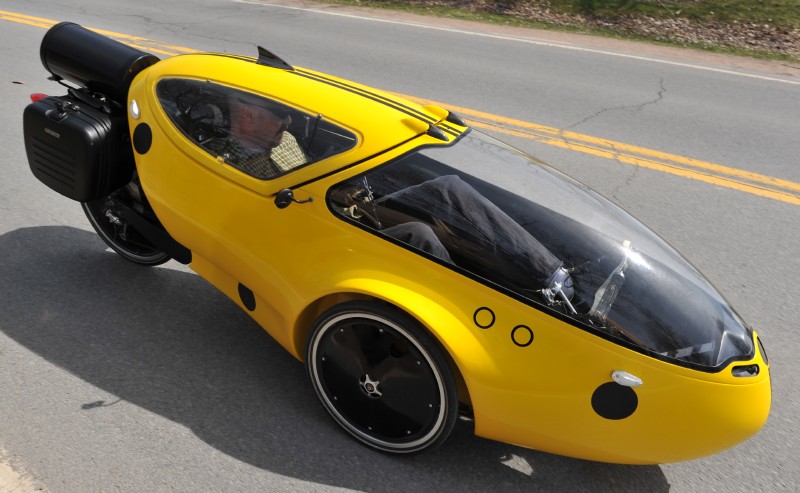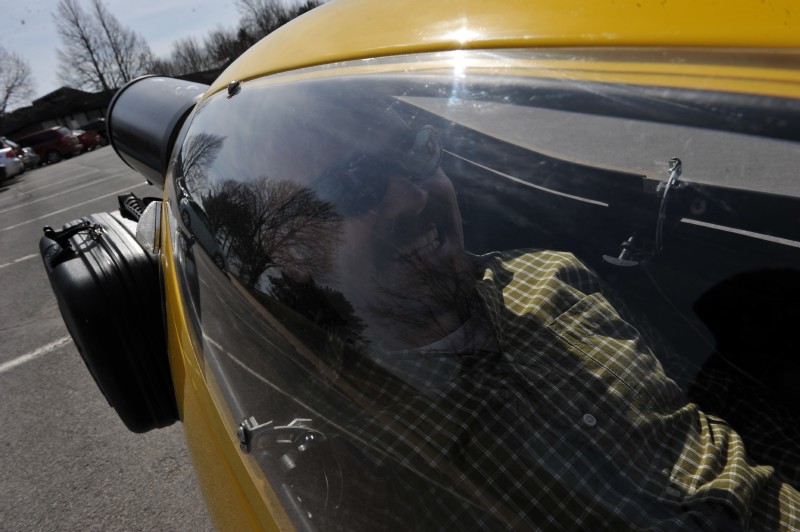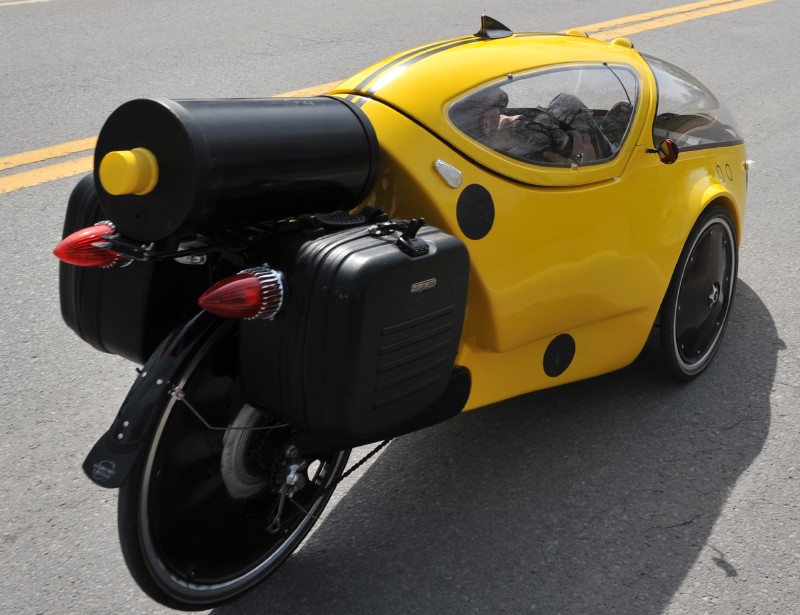The Aurora Project: A Human-Hybrid Lithium Rocket Trike!

Disclaimer:
Disclaimer: I assume no liability for what you may see on this page. In the same way that some people should never have any sharp objects, I do not advocate or encourage doing anything shown on this page. With that said, proceed at your own risk and enjoy the show!
CrazyJerry
The Challenge:
- Present a viable alternative to the 115mpg Changzuki Suzuki Diesel Motorcycle.
- Make sure parts are readily available in case of a failure.
- Since I am my own warranty, simplicity and customer support are mandatory!
- Must fit into CrazyJerry's Off-Grid endeavor.
- Should be of a 12 volt platform.
- Finally, it has to promote health.
This project took an entire winter to design and build so all the pieces would work together. The base of the project is a GoOne3 velomobile. These were designed as pedal power only but if there was ever a velomobile that begged to be a lithium candidate - then this one is it!!
Looking around the exterior we see a Bumble-Bee bright yellow and black paint scheme. With the lithium addition it's upgraded to "Super-Bee"! The windshield is a long, sloping, sexy piece of laminate that helps to complete the torpedo frontal profile. The roof and side windows as a unit, hinges in the front and lifts from the rear for driver access into the cockpit. Behind the cabin there is a black round tube that houses the regenerative brake and charge electronics. Also sharing the space is the on-board DVR CCTV main unit. The two large black storage boxes on each side house the lithium batteries and provide a mount for the rear 1959 Cadillac bullet brake-tail-and turn signal lights.
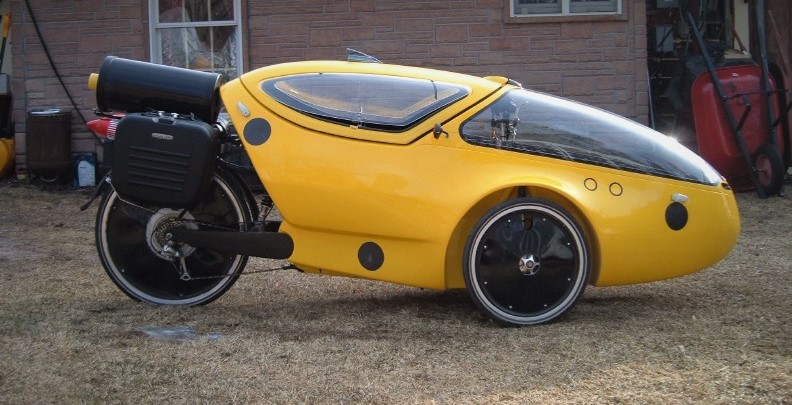
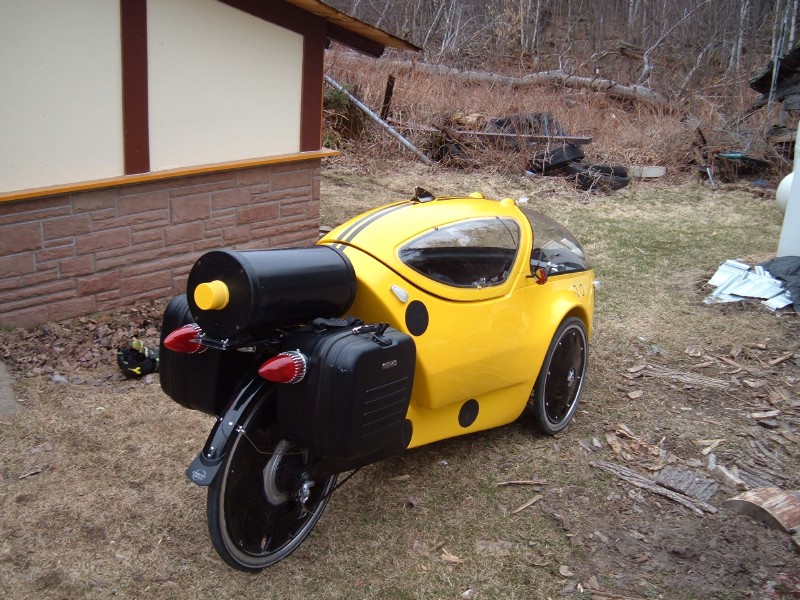

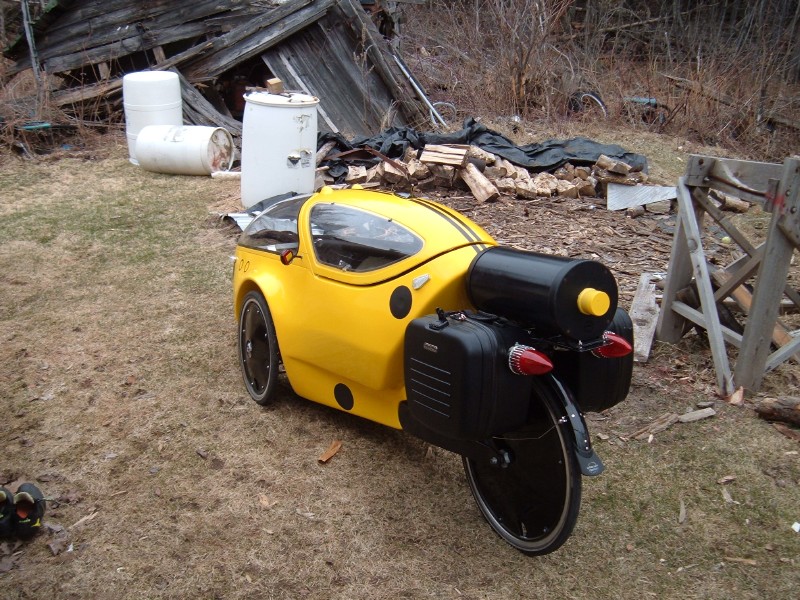
The Suspension and Brakes:
The front 20 inch wheels stop using the GoOne3 stock cable operated drum brakes. Each wheel is independently sprung using a McPherson type absorbing unit. Steering is accomplished via a hinged rudder. The hinge makes entry into the driver's seat much easier as the rudder can be swung upward out of the way.
The 26 inch rear wheel is mounted to a carbon fiber swingarm and has an adjustable rear coiled spring and shock combination unit. Rear wheel braking is accomplished through the electric hub motor while in the regenerative braking mode. The regen feature is adjustable and when activated, will currently slow the trike down to about 5 mph before it freewheels.
The Cockpit:
The driver's cabin is where all the action is and it does resemble that of an airplane. Once inside, a beam houses the front clip-style pedals and chainring. The seat is angled way back and supports the driver from the shoulders all the way down to the top of the legs. It's very firm but comfy and has a mesh pad to promote airflow.
Overhead is the on-board computer control and display unit. Here one can monitor speed, trip miles, battery voltage, battery load and the different modes available. To the left of the driver is a switchboard that allow for operation of the headlight, flashing lights, marker lights, tail lights, and undercarriage lights. There's also a pulse width controller for the forced air ventilation system which can also defog the windshield. On the right side of the driver is a mount for a cell phone along with a hookup to the pre-amp and external stereo speakers.
Behind the driver's headrest is a space which houses the converter for the 12 volt accessories, and the control head for the on-board Four-Camera CCTV DVR. The DVR can be accessed wirelessly via cellphone to monitor the trike while in a store, etc. Video can easily be transferred wirelessly or by lan cable from the DVR to computer, etc...
Battery Cell Level Monitor and Balance Charge Ports
Battery charging is possible through a variety of ways to address wherever you might be! It will accept charging through a standard 110 volt ac wall outlet. Here at CrazyJerry's off-grid extravaganza, there is a charge station that takes electricity directly from the solar panels and send that to the lithium battery pack. If out on the road, charging the 48 volt lithium pack is fully initiated anytime the dc input is given 7 volts or more.
If individual lithium cells within the pack need balancing, that can be done manually or automatically. Each cell has built in balance boards for automatic top balancing. If there is a need to manually balance the cells, a plug-and-play unit attaches and has individual cell voltage readings and a corresponding port to bump up power to the cell, or pull excess away.
- The plug-and-play panel will monitor battery voltage at the individual cell level - 16 cells total
- The audio jacks are wired to each cell for individual cell balancing
- The panel is portable for use on the trike or when the batteries are removed
- The audio jack circuits to each cell are fuse protected by side mounted fuse blocks
- The Panel meters have a beeper built in to alert of an under or over charge condition
- If you zoom in on the pic you can see how close the cell voltages match
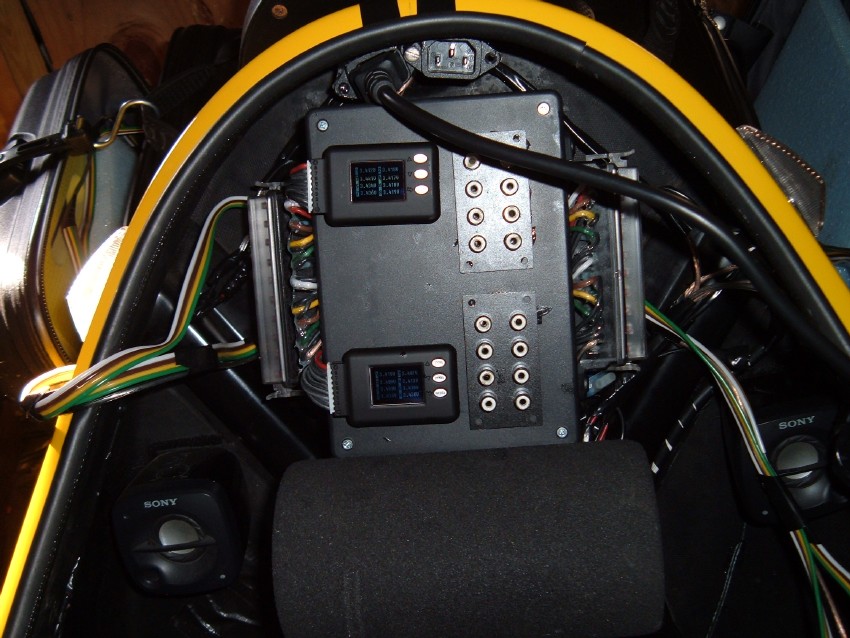
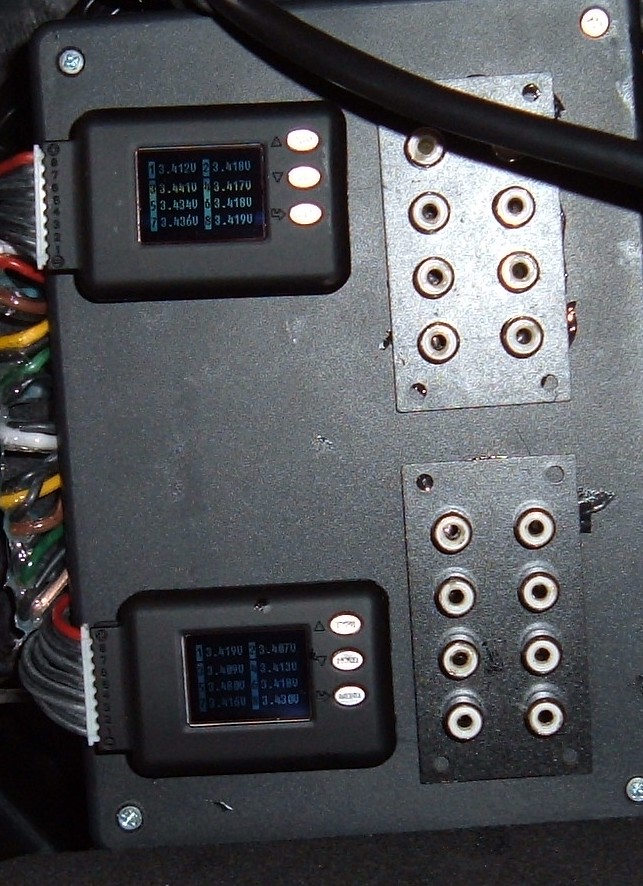
Drivability:
It's a blast to drive but it's not an off-road vehicle and best suited for decent asphalt. Side winds are not much of an issue in spite of the large side profile. It has a sporty ride and steers like a go-cart! On a full charge which is up around 58-60 volts it has a burst speed of about 52 miles per hour. Adding more batteries equals more range and speed - it's that easy. With pedaling it will top a 100 mile trip on a single charge. The entire trike, less driver, weighs 110 pounds.
